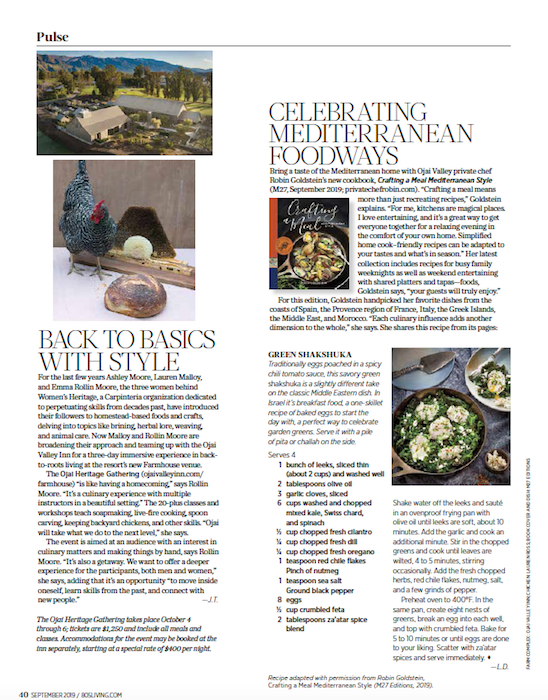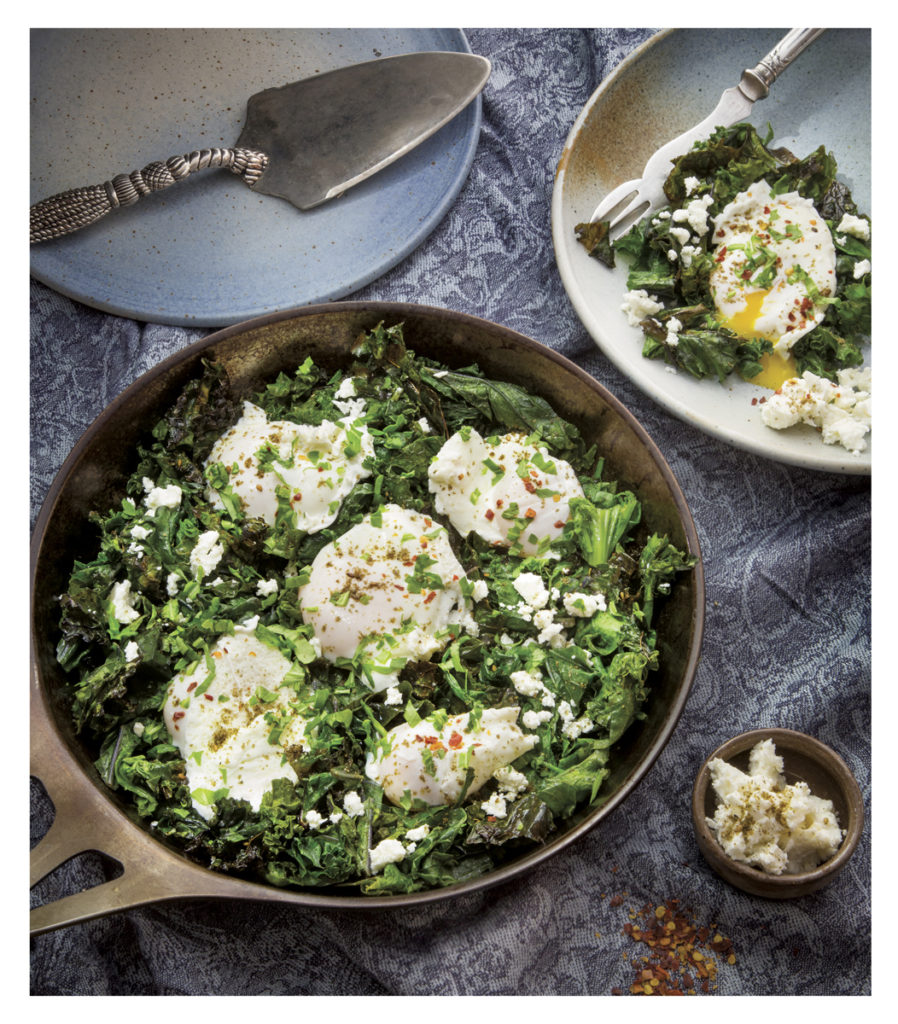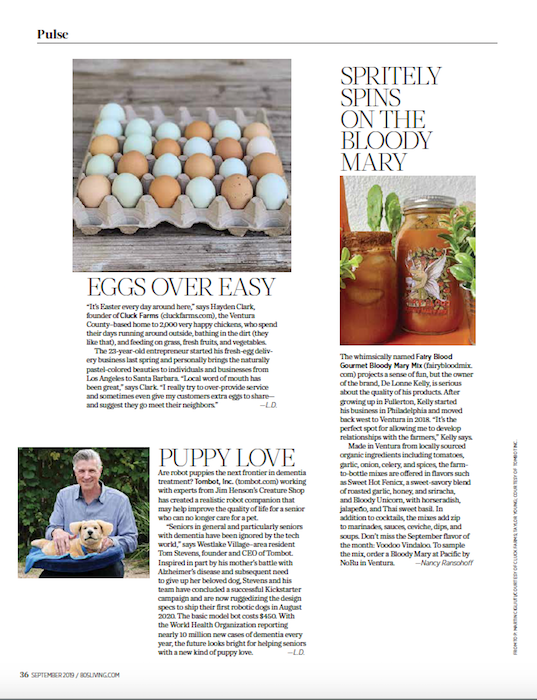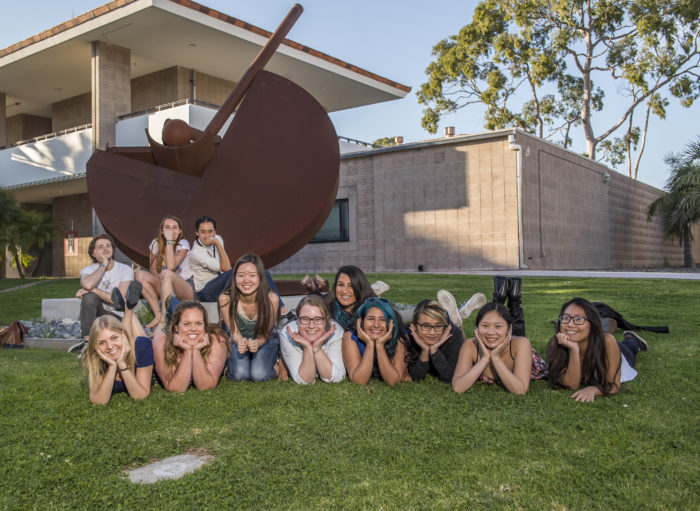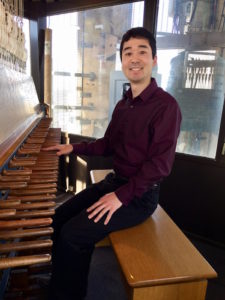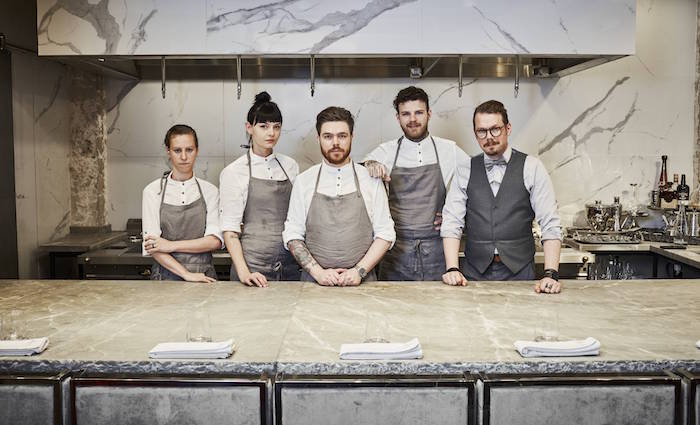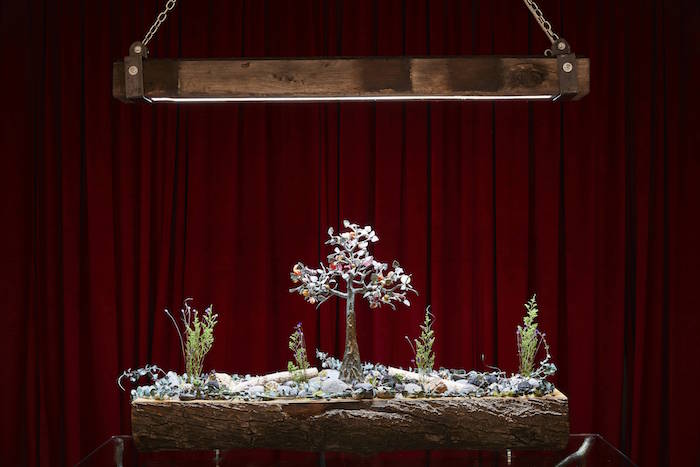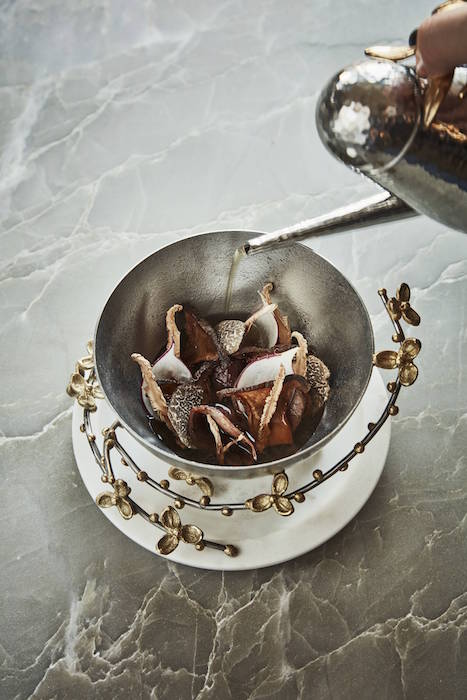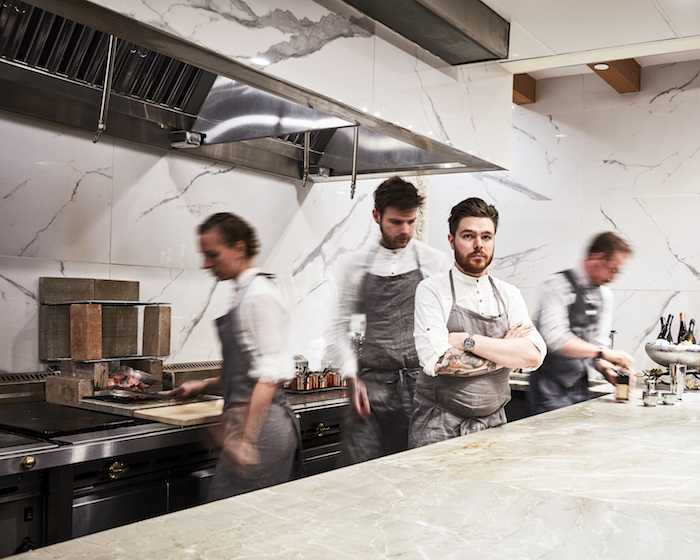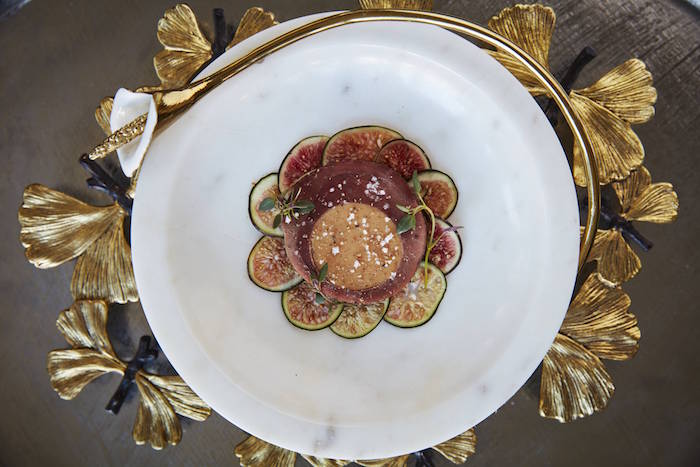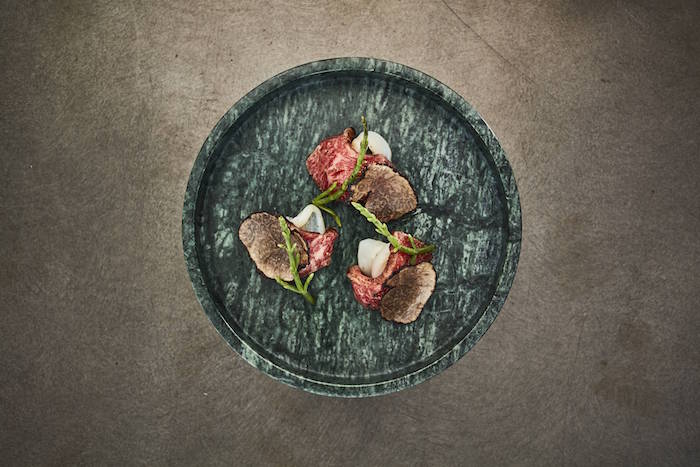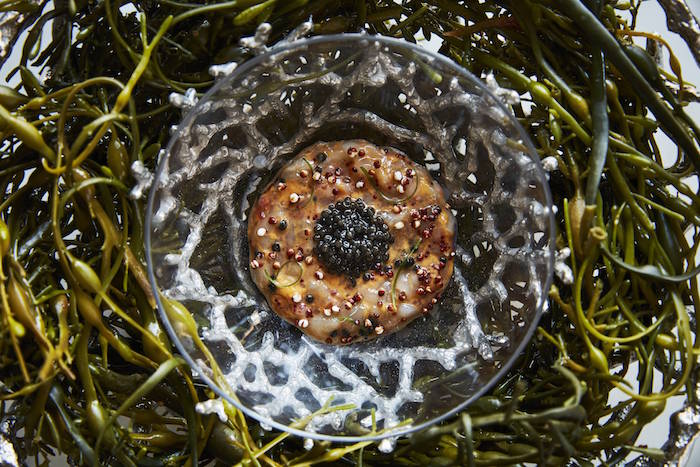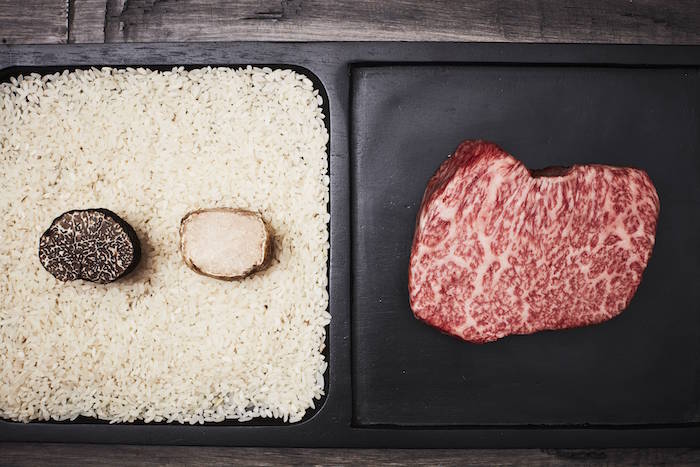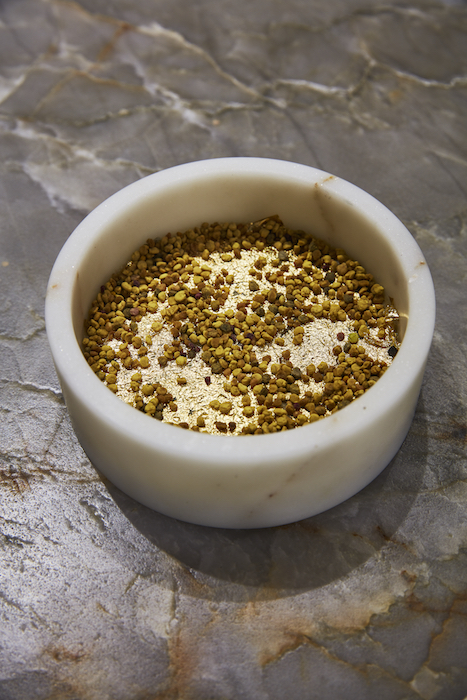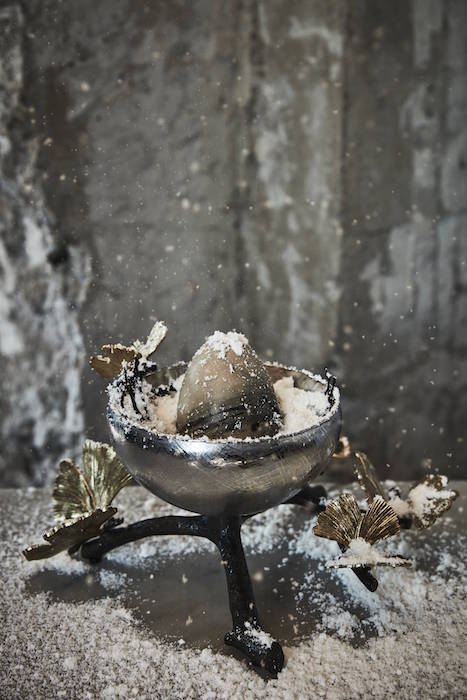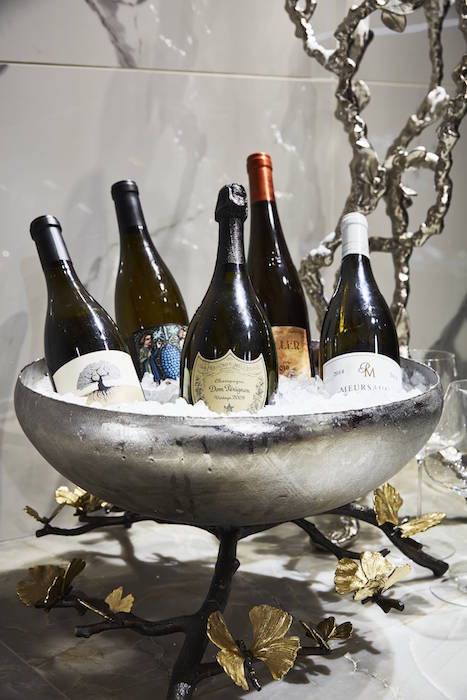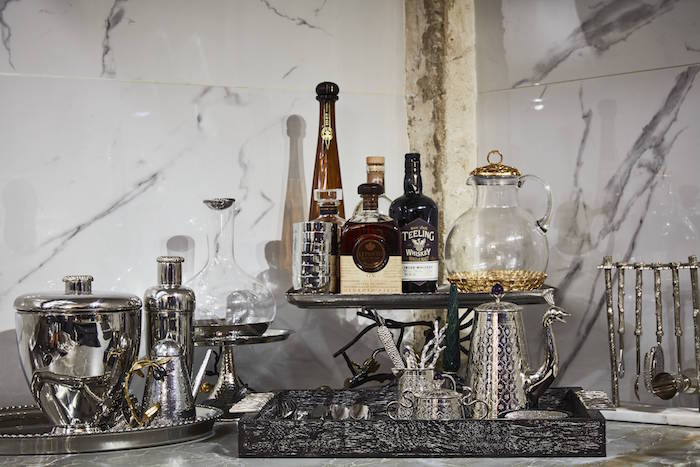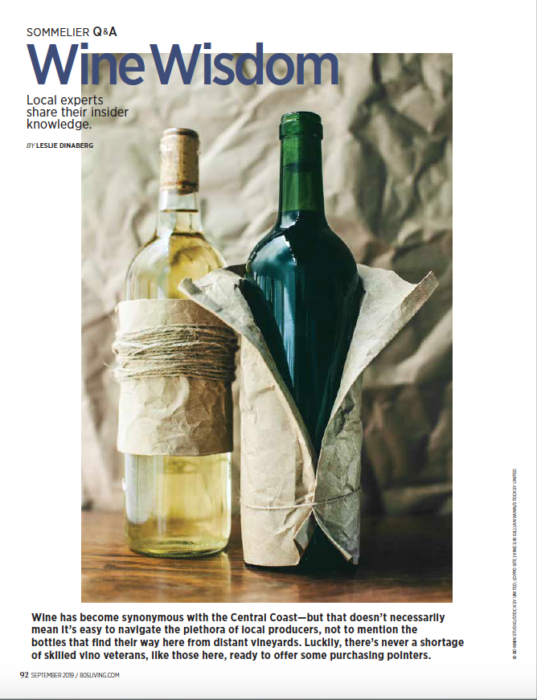
Originally appeared in 805 Living Magazine, https://www.805living.com/archive.html.
Local experts share their insider knowledge.
Wine has become synonymous with the Central Coast—but that doesn’t necessarily
mean it’s easy to navigate the plethora of local producers, not to mention the
bottles that find their way here from distant vineyards. Luckily, there’s never a shortage
of skilled vino veterans, like those here, ready to offer some purchasing pointers.
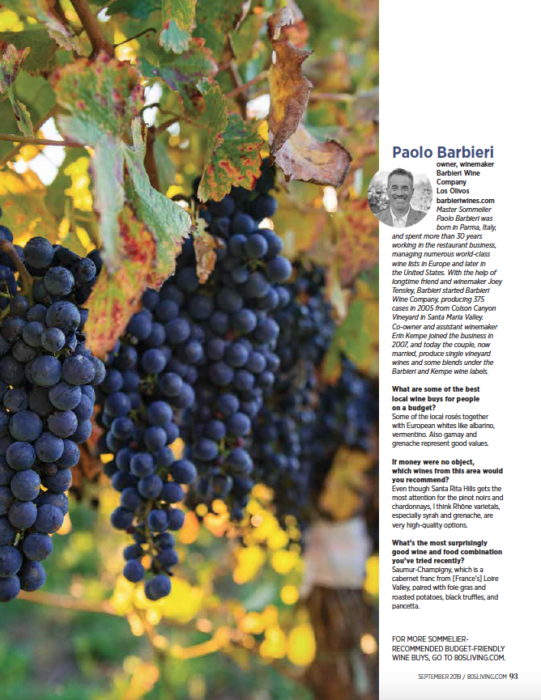
Originally appeared in 805 Living Magazine, https://www.805living.com/archive.html
Paolo Barbieri, owner, winemaker, Barbieri Wine Company, Los Olivos, barbieriwines.com, Master Sommelier
Paolo Barbieri was born in Parma, Italy, and spent more than 30 years working in the restaurant business, managing numerous world-class wine lists in Europe and later in the United States. With the help of longtime friend and winemaker Joey Tensley, Barbieri started Barbieri Wine Company, producing 375 cases in 2005 from Colson Canyon Vineyard in Santa Maria Valley. Co-owner and assistant winemaker Erin Kempe joined the business in 2007, and today the couple, now married, produce single vineyard wines and some blends under the Barbieri and Kempe wine labels.
What are some of the best local wine buys for people on a budget?
Some of the local rosés together with European whites like albarino, vermentino. Also gamay and grenache represent good values.
If money were no object, which wines from this area would you recommend?
Even though Santa Rita Hills gets the most attention for the pinot noirs and chardonnays, I think Rhône varietals, especially syrah and grenache, are very high-quality options.
What’s the most surprisingly good wine and food combination you’ve tried recently?
Saumur-Champigny, which is a cabernet franc from [France’s] Loire Valley, paired with foie gras and roasted potatoes, black truffles, and pancetta.
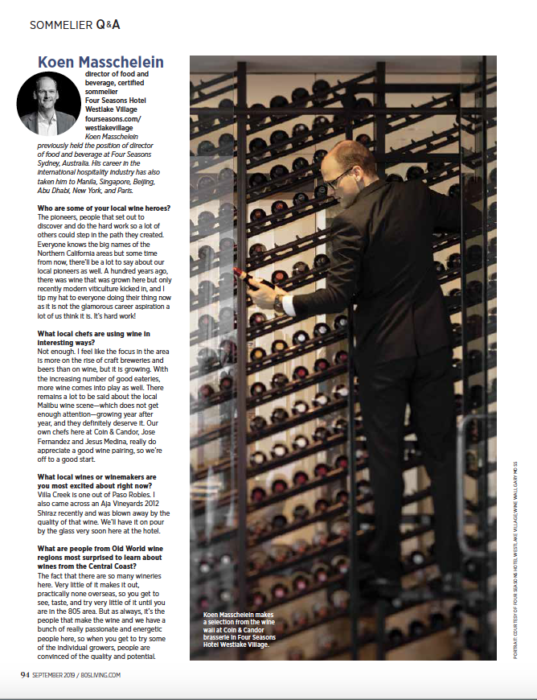
Originally appeared in 805 Living Magazine, https://www.805living.com/archive.html
Koen Masschelein, director of food and beverage, certified sommelier Four Seasons Hotel Westlake Village, fourseasons.com/westlakevillage
Koen Masschelein previously held the position of director of food and beverage at Four Seasons Sydney, Australia. His career in the international hospitality industry has also taken him to Manila, Singapore, Beijing, Abu Dhabi, New York, and Paris.
Who are some of your local wine heroes?
The pioneers, people that set out to discover and do the hard work so a lot of others could step in the path they created. Everyone knows the big names of the Northern California areas but some time from now, there’ll be a lot to say about our local pioneers as well. A hundred years ago, there was wine that was grown here but only recently modern viticulture kicked in, and I tip my hat to everyone doing their thing now as it is not the glamorous career aspiration a lot of us think it is. It’s hard work!
What local chefs are using wine in interesting ways?
Not enough. I feel like the focus in the area is more on the rise of craft breweries and beers than on wine, but it is growing. With the increasing number of good eateries, more wine comes into play as well. There remains a lot to be said about the local Malibu wine scene—which does not get enough attention—growing year after year, and they definitely deserve it. Our own chefs here at Coin & Candor, Jose Fernandez and Jesus Medina, really do appreciate a good wine pairing, so we’re off to a good start.
What local wines or winemakers are you most excited about right now?
Villa Creek is one out of Paso Robles. I also came across an Aja Vineyards 2012 Shiraz recently and was blown away by the quality of that wine. We’ll have it on pour by the glass very soon here at the hotel.
What are people from Old World wine regions most surprised to learn about wines from the Central Coast?
The fact that there are so many wineries here. Very little of it makes it out, practically none overseas, so you get to see, taste, and try very little of it until you are in the 805 area. But as always, it’s the people that make the wine and we have a bunch of really passionate and energetic people here, so when you get to try some of the individual growers, people are convinced of the quality and potential.
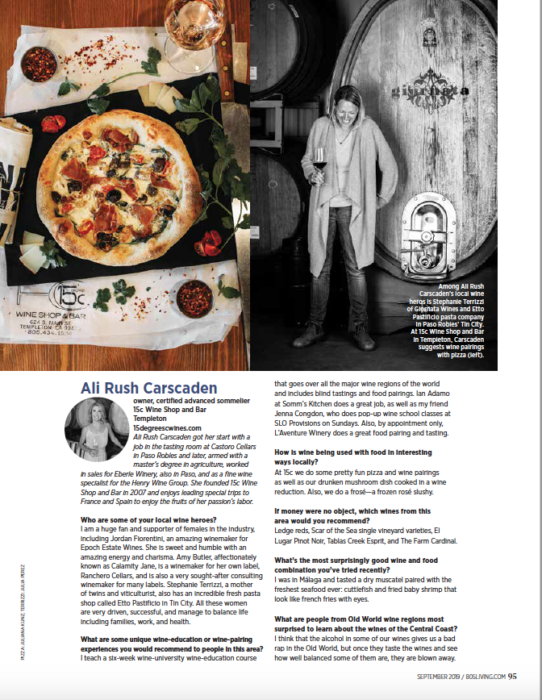
Originally appeared in 805 Living Magazine, https://www.805living.com/archive.html
Ali Rush Carscaden, owner, certified advanced sommelier, 15c Wine Shop and Bar, Templeton, 15degreescwines.com
Ali Rush Carscaden got her start with a job in the tasting room at Castoro Cellars in Paso Robles and later, armed with a master’s degree in agriculture, worked in sales for Eberle Winery, also in Paso, and as a fine wine specialist for the Henry Wine Group. She founded 15c Wine Shop and Bar in 2007 and enjoys leading special trips to France and Spain to enjoy the fruits of her passion’s labor.
Who are some of your local wine heroes?
I am a huge fan and supporter of females in the industry, including Jordan Fiorentini, an amazing winemaker for Epoch Estate Wines. She is sweet and humble with an amazing energy and charisma. Amy Butler, affectionately known as Calamity Jane, is a winemaker for her own label, Ranchero Cellars, and is also a very sought-after consulting winemaker for many labels. Stephanie Terrizzi, a mother of twins and viticulturist, also has an incredible fresh pasta shop called Etto Pastificio in Tin City. All these women are very driven, successful, and manage to balance life including families, work, and health.
What are some unique wine-education or wine-pairing experiences you would recommend to people in this area?
I teach a six-week wine-university wine-education course that goes over all the major wine regions of the world and includes blind tastings and food pairings. Ian Adamo at Somm’s Kitchen does a great job, as well as my friend Jenna Congdon, who does pop-up wine school classes at SLO Provisions on Sundays. Also, by appointment only, L’Aventure Winery does a great food pairing and tasting.
How is wine being used with food in interesting ways locally?
At 15c we do some pretty fun pizza and wine pairings as well as our drunken mushroom dish cooked in a wine reduction. Also, we do a frosé—a frozen rosé slushy.
If money were no object, which wines from this area would you recommend?
Ledge reds, Scar of the Sea single vineyard varieties, El Lugar Pinot Noir, Tablas Creek Esprit, and The Farm Cardinal.
What’s the most surprisingly good wine and food combination you’ve tried recently?
I was in Málaga and tasted a dry muscatel paired with the freshest seafood ever: cuttlefish and fried baby shrimp that look like french fries with eyes.
What are people from Old World wine regions most surprised to learn about the wines of the Central Coast?
I think that the alcohol in some of our wines gives us a bad rap in the Old World, but once they taste the wines and see how well balanced some of them are, they are blown away.
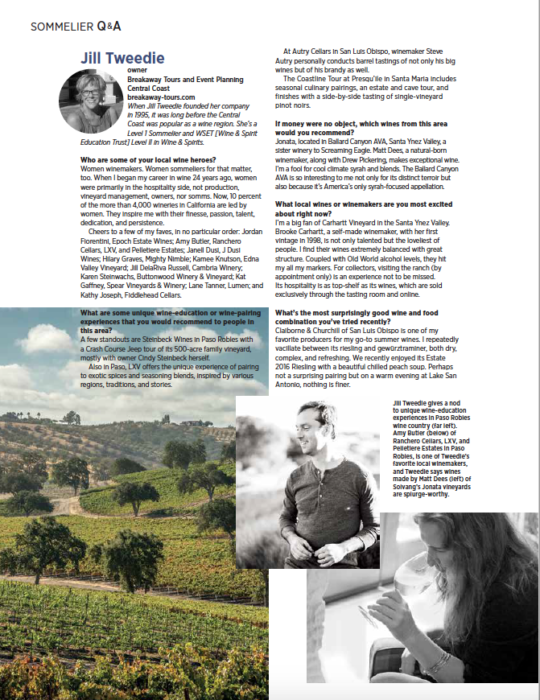
Originally appeared in 805 Living Magazine, https://www.805living.com/archive.html
Jill Tweedie, owner, Breakaway Tours and Event Planning, Central Coast, breakaway-tours.com
When Jill Tweedie founded her company in 1995, it was long before the Central Coast was popular as a wine region. She’s a Level 1 Sommelier and WSET [Wine & Spirit Education Trust] Level II in Wine & Spirits.
Who are some of your local wine heroes?
Women winemakers. Women sommeliers for that matter, too. When I began my career in wine 24 years ago, women were primarily in the hospitality side, not production, vineyard management, owners, nor somms. Now, 10 percent of the more than 4,000 wineries in California are led by women. They inspire me with their finesse, passion, talent, dedication, and persistence.
Cheers to a few of my faves, in no particular order: Jordan Fiorentini, Epoch Estate Wines; Amy Butler, Ranchero Cellars, LXV, and Pelletiere Estates; Janell Dusi, J Dusi Wines; Hilary Graves, Mighty Nimble; Kamee Knutson, Edna Valley Vineyard; Jill DelaRiva Russell, Cambria Winery; Karen Steinwachs, Buttonwood Winery & Vineyard; Kat Gaffney, Spear Vineyards & Winery; Lane Tanner, Lumen; and Kathy Joseph, Fiddlehead Cellars.
What are some unique wine-education or wine-pairing experiences that you would recommend to people in this area?
A few standouts are Steinbeck Wines in Paso Robles with a Crash Course Jeep tour of its 500-acre family vineyard, mostly with owner Cindy Steinbeck herself.
Also in Paso, LXV offers the unique experience of pairing to exotic spices and seasoning blends, inspired by various regions, traditions, and stories.
At Autry Cellars in San Luis Obispo, winemaker Steve Autry personally conducts barrel tastings of not only his big wines but of his brandy as well.
The Coastline Tour at Presqu’ile in Santa Maria includes seasonal culinary pairings, an estate and cave tour, and finishes with a side-by-side tasting of single-vineyard pinot noirs.
If money were no object, which wines from this area would you recommend?
Jonata, located in Ballard Canyon AVA, Santa Ynez Valley, a sister winery to Screaming Eagle. Matt Dees, a natural-born winemaker, along with Drew Pickering, makes exceptional wine. I’m a fool for cool climate syrah and blends. The Ballard Canyon AVA is so interesting to me not only for its distinct terroir but also because it’s America’s only syrah-focused appellation.
What local wines or winemakers are you most excited about right now?
I’m a big fan of Carhartt Vineyard in the Santa Ynez Valley. Brooke Carhartt, a self-made winemaker, with her first vintage in 1998, is not only talented but the loveliest of people. I find their wines extremely balanced with great structure. Coupled with Old World alcohol levels, they hit my all my markers. For collectors, visiting the ranch (by appointment only) is an experience not to be missed. Its hospitality is as top-shelf as its wines, which are soldexclusively through the tasting room and online.
What’s the most surprisingly good wine and food combination you’ve tried recently?
Claiborne & Churchill of San Luis Obispo is one of my favorite producers for my go-to summer wines. I repeatedly vacillate between its riesling and gewürztraminer, both dry, complex, and refreshing. We recently enjoyed its Estate 2016 Riesling with a beautiful chilled peach soup. Perhaps not a surprising pairing but on a warm evening at Lake San Antonio, nothing is finer.
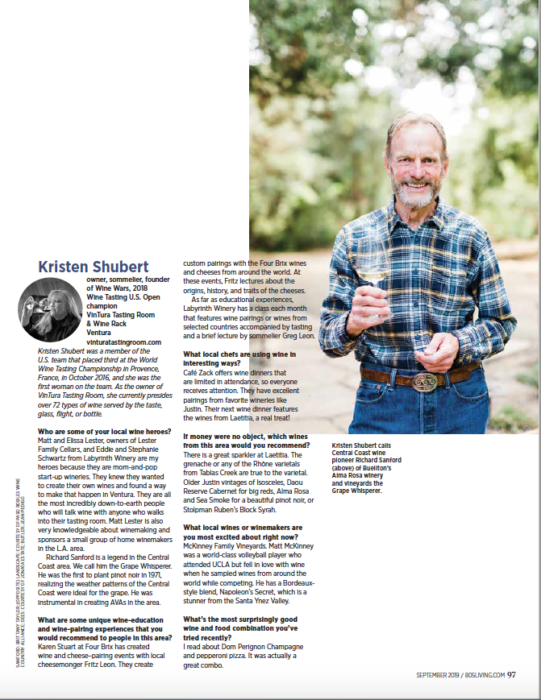
Originally appeared in 805 Living Magazine, https://www.805living.com/archive.html
Kristen Shubert, owner, sommelier, founder of Wine Wars, 2018 Wine Tasting U.S. Open champion, VinTura Tasting Room & Wine Rack, Ventura, vinturatastingroom.com
Kristen Shubert was a member of the U.S. team that placed third at the World Wine Tasting Championship in Provence, France, in October 2016, and she was the first woman on the team. As the owner of VinTura Tasting Room, she currently presides over 72 types of wine served by the taste, glass, flight, or bottle.
Who are some of your local wine heroes?
Matt and Elissa Lester, owners of Lester Family Cellars, and Eddie and Stephanie Schwartz from Labyrinth Winery are my heroes because they are mom-and-pop start-up wineries. They knew they wanted to create their own wines and found a way to make that happen in Ventura. They are all the most incredibly down-to-earth people who will talk wine with anyone who walks into their tasting room. Matt Lester is also very knowledgeable about winemaking and sponsors a small group of home winemakers in the L.A. area.
Richard Sanford is a legend in the Central Coast area. We call him the Grape Whisperer. He was the first to plant pinot noir in 1971, realizing the weather patterns of the CentralCoast were ideal for the grape. He was instrumental in creating AVAs in the area.
What are some unique wine-education and wine-pairing experiences that you would recommend to people in this area?
Karen Stuart at Four Brix has created wine and cheese–pairing events with local cheesemonger Fritz Leon. They create custom pairings with the Four Brix wines and cheeses from around the world. At these events, Fritz lectures about the origins, history, and traits of the cheeses.
As far as educational experiences, Labyrinth Winery has a class each month that features wine pairings or wines from selected countries accompanied by tasting and a brief lecture by sommelier Greg Leon.
What local chefs are using wine in interesting ways?
Café Zack offers wine dinners that are limited in attendance, so everyone receives attention. They have excellent pairings from favorite wineries like Justin. Their next wine dinner features the wines from Laetitia, a real treat!
If money were no object, which wines from this area would you recommend?
There is a great sparkler at Laetitia. The grenache or any of the Rhône varietals from Tablas Creek are true to the varietal. Older Justin vintages of Isosceles, Daou Reserve Cabernet for big reds, Alma Rosa and Sea Smoke for a beautiful pinot noir, or Stolpman Ruben’s Block Syrah.
What local wines or winemakers are you most excited about right now?
McKinney Family Vineyards. Matt McKinney was a world-class volleyball player who attended UCLA but fell in love with wine when he sampled wines from around the world while competing. He has a Bordeaux style blend, Napoleon’s Secret, which is a stunner from the Santa Ynez Valley.
What’s the most surprisingly good wine and food combination you’ve tried recently?
I read about Dom Perigean Champagne and pepperoni pizza. It was actually a great combo.
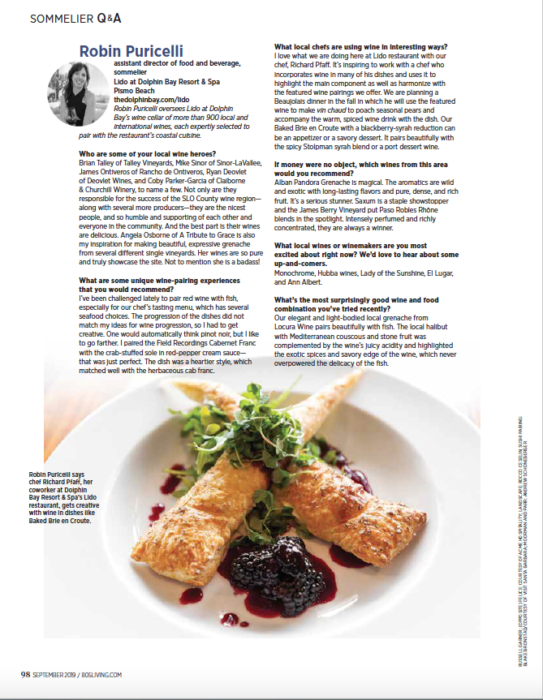
Originally appeared in 805 Living Magazine, https://www.805living.com/archive.html
Robin Puricelli, assistant director of food and beverage, sommelier, Lido at Dolphin Bay Resort & Spa, Pismo Beach, thedolphinbay.com/lido
Robin Puricelli oversees Lido at Dolphin Bay’s wine cellar of more than 900 local and international wines, each expertly selected to pair with the restaurant’s coastal cuisine.
Who are some of your local wine heroes?
Brian Talley of Talley Vineyards, Mike Sinor of Sinor-LaVallee, James Ontiveros of Rancho de Ontiveros, Ryan Deovlet of Deovlet Wines, and Coby Parker-Garcia of Claiborne & Churchill Winery, to name a few. Not only are they responsible for the success of the SLO County wine region—along with several more producers—they are the nicest people, and so humble and supporting of each other and everyone in the community. And the best part is their wines are delicious. Angela Osborne of A Tribute to Grace is also my inspiration for making beautiful, expressive grenache from several different single vineyards. Her wines are so pure and truly showcase the site. Not to mention she is a badass!
What are some unique wine-pairing experiences that you would recommend?
I’ve been challenged lately to pair red wine with fish, especially for our chef’s tasting menu, which has several seafood choices. The progression of the dishes did not match my ideas for wine progression, so I had to get creative. One would automatically think pinot noir, but I like to go farther. I paired the Field Recordings Cabernet Franc with the crab-stuffed sole in red-pepper cream sauce—that was just perfect. The dish was a heartier style, which matched well with the herbaceous cab franc.
What local chefs are using wine in interesting ways?
I love what we are doing here at Lido restaurant with our chef, Richard Pfaff. It’s inspiring to work with a chef who incorporates wine in many of his dishes and uses it to highlight the main component as well as harmonize with the featured wine pairings we offer. We are planning a Beaujolais dinner in the fall in which he will use the featured wine to make vin chaud to poach seasonal pears and accompany the warm, spiced wine drink with the dish. Our Baked Brie en Croute with a blackberry-syrah reduction can be an appetizer or a savory dessert. It pairs beautifully with the spicy Stolpman syrah blend or a port dessert wine.
If money were no object, which wines from this area would you recommend?
Alban Pandora Grenache is magical. The aromatics are wild and exotic with long-lasting flavors and pure, dense, and rich fruit. It’s a serious stunner. Saxum is a staple showstopper and the James Berry Vineyard put Paso Robles Rhône blends in the spotlight. Intensely perfumed and richly concentrated, they are always a winner.
What local wines or winemakers are you most excited about right now? We’d love to hear about some up-and-comers.
Monochrome, Hubba wines, Lady of the Sunshine, El Lugar, and Ann Albert.
What’s the most surprisingly good wine and food combination you’ve tried recently?
Our elegant and light-bodied local grenache from Locura Wine pairs beautifully with fish. The local halibut with Mediterranean couscous and stone fruit was complemented by the wine’s juicy acidity and highlighted the exotic spices and savory edge of the wine, which never overpowered the delicacy of the fish.

Originally appeared in 805 Living Magazine, https://www.805living.com/archive.html
Hayden Felice, wine director, Acme Hospitality, Santa Barbara, acmehospitality.com
As the wine director for Acme Restaurant Properties—which include The Lark, Lucky Penny, Santa Barbara Wine Collective, Loquita, and Tyger Tyger—Hayden Felice offers a knowledgeable view into the depth and breadth of the 805 wine scene.
Who are some of your local wine heroes?
Richard Sanford is a local legend. Talk about ahead of his time: He planted pinot noir in Santa Rita Hills in 1971. The vineyard is still one of the top vineyard sources in the county. He’s also one of the most patient, knowledgeable, humble, and kind people I’ve met inthe wine industry and an incredible human.
Rajat Parr and Sashi Moorman, partners in the Sandhi and Domaine de la Côte wine labels, are part of the vanguard. Raj, a brilliant but humble force of nature, brings his epic tasting ability and entrée into the greatest domaines in the world to bear on Santa Barbara County and Oregon’s Willamette Valley. He is always looking to help people in the wine community move the ball forward. He is generous with both his considerable knowledge and extremely limited time. Sashi is a passionate, reflective, sharp, and searching winemaker who executes their shared vision, focusing on biodynamic vineyard care and high-density planting.
What local winemakers are you most excited about right now?
Raj and Sashi again. Amy Christine and Peter Hunken of Joy Fantastic, Kyle Knapp at Stolpman, Justin Willett of Tyler, Wenzlau, and soon-to-be other projects, Matt Brady of Samsara, and Drake Whitcraft of Whitcraft.
What’s the most surprisingly good wine and food combination you’ve tried recently?
Sushi Bar Montecito’s 17-course omakase menu with a 1-liter bottle of Les Vins Pirouettes by Christian Binner, Le Sylvaner Glouglou d’Hubert et Christian.
What are people from Old World wine regions most surprised to learn about the wines from the Central Coast?
Wines here can be very low alcohol, crunchy, and mineral-driven.
Click here to read these stories as they appeared in 805 Living magazine, September 2019. 805 Living Sept 2019 Wine Wisdom 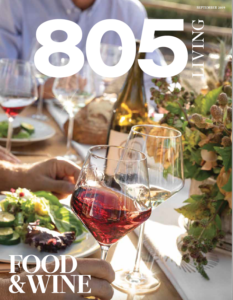

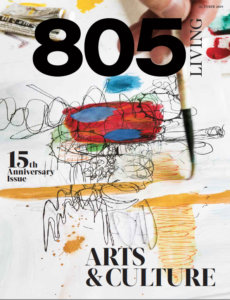

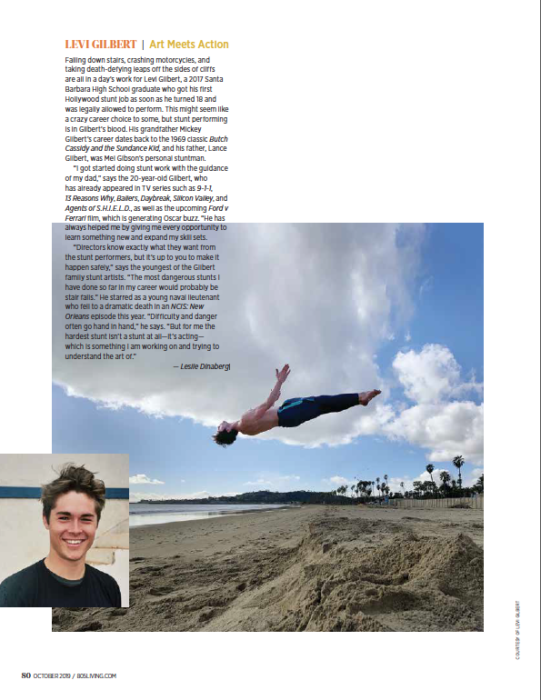
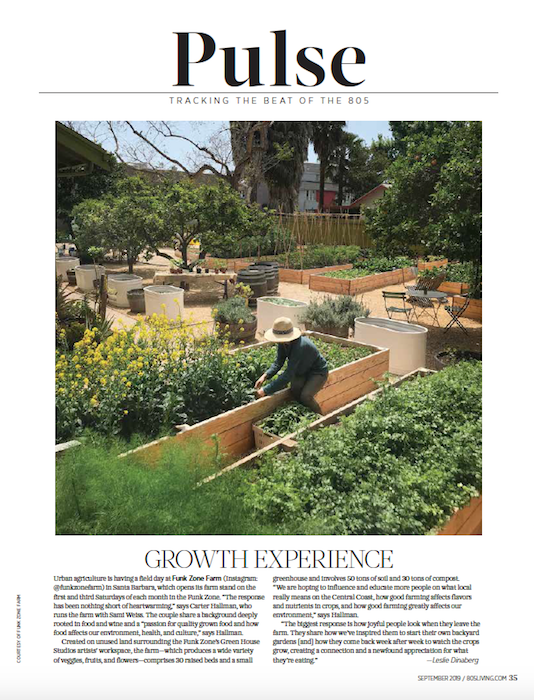
 Click here to read this story as it appeared in
Click here to read this story as it appeared in 